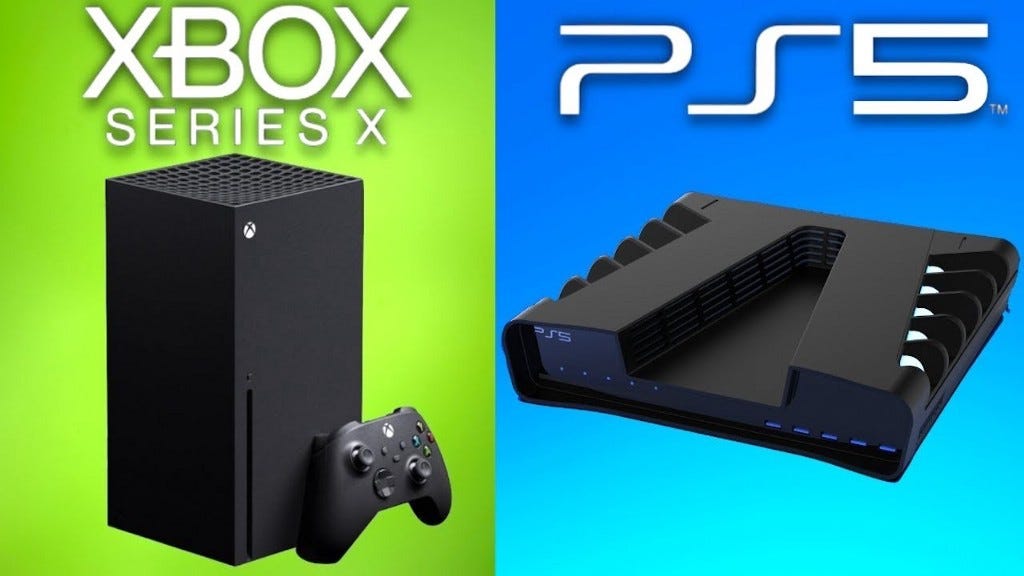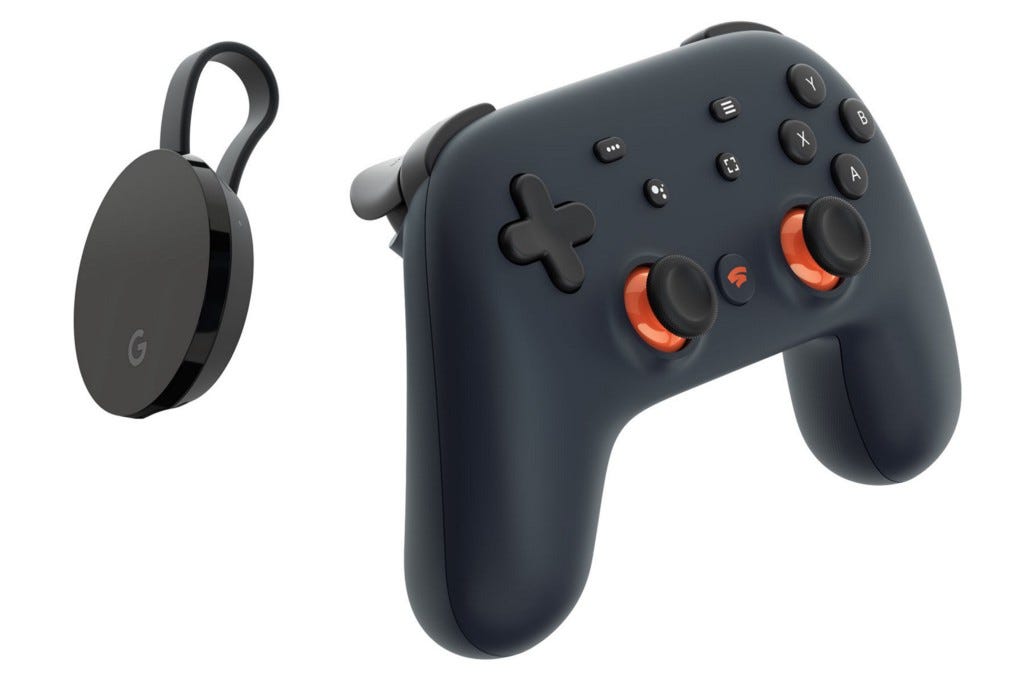How the coming console generation will be different
The games industry is going through a transition year. Big time.
In response to the growing number of requests around what’s going to happen in the console space this year, I’ve put together a few thoughts on where I believe this segment is headed.

From the top, the hardest question to answer for hardware manufacturers is how they plan to address the much more diversified audience for interactive entertainment. For years it has been an arms race around better graphics and processing power. But as we can already discern from Microsoft’s $20/month Xbox and Sony’s struggle to come up with appropriate pricing, mainstream audiences are now front and center to the success of legacy platform makers. Each is formulating their own strategy.
The biggest concern among legacy platforms is how to cater to a consumer base that is no longer as homogeneous as it has historically been. The success of services like Xbox Game Pass indicate that there is appetite for buffet-style gaming in combination with micro-transactions because it affords consumers access to a wider array of content and having to make a smaller financial commitment. That is a radical deviation from the traditional business of serialized “bro” content. It will take time for platform holders to establish their own unique offering.
Next, traditional console manufacturers now compete with a broader range of available substitutes in the form of high-quality mobile gaming and the abundance of content on PC, and services (e.g., streaming video). Call of Duty Mobile is not, nor will it ever be, the same as the CoD experience on console. But what if it’s good enough? Activision reaches more consumers with this cross-platform approach that may be totally happy to just play the mobile version and abandon the $60 console version. The interests of third-party publishers are starting to differ from those of console makers.
The console business is changing and will soon likely resemble the model we find in mobile. Just like handset manufacturers, console makers can no longer offer just a single device for the entire market. We’ve already seen as much in the current generation. Price points for the devices have to come down, even if it costs more today to build them, and there has to be ample bundled content at launch. All of which costs money and reduces the pool of contenders.
And then there is also the role of digital distribution. Microsoft already released a digital-only device, and Sony is expanding its digital services to generate subscription revenue. How well equipped will console makers be in 2020 to move away from the comparatively high risk of the physical games business and, instead, embrace digital services and content distribution? So far, Nintendo’s answer has been to expand its footprint by releasing different tiers and branded devices, and finally accessing the Chinese market. Meanwhile CD Projekt Red sees its valuation skyrocket on the success of a Netflix show based on the Witcher. Where’s Mario?
Different from the generational transitions before is that during the current period of fluidity we can expect a string of newcomers trying to crash the party and existing partnerships to erode as content creators look to disintermediate through vertical integration.

Recent market entrants like Google Stadia have not made the strongest of impressions. But it is clear that it is open season on the console games business among tech firms. Facebook has similarly acquired a cloud gaming firm. Mobile carriers like T-Mobile and Verizon have been investing in cloud gaming and related services to “get into gaming.” And Amazon’s quiet absence suggests that team Bezos is going to announce itself once every other player has shown its hand.
Simultaneously we can expect more major publishers trying to build their own platforms and distribution points. The current transition period affords the industry leaders to reduce their exposure to traditional retailers and platform holders and gain direct access to consumers instead. We already know that EA is trying exactly that after buying GameFly’s streaming division. And there are consistent rumors of an abandoned cloud streaming project that’s looking to be sold to a major label.
There are three considerations here that may negatively affect the industry and put especially the console business in a negative spiral.
Over the past 18 months we have been observing the initial tremors of what may become a full-fledged earthquake. The chaos that took place in China’s regulatory environment around mobile game approvals is by no means an isolated circumstance but part of a much broader effort to constrict access to its consumer market. It means that only a few major firms will be able to get through to the world’s largest gamer audience, which, in turn, greatly increases the industry’s risk profile. More recently the growing tensions around the US/China trade agreements started to negatively affect console makers and the free flow of their goods and services between countries. If that wasn’t enough, the growing concern around the Coronavirus exposes how fragile the console industry is during this transition period as large hardware manufacturers suffer volatility in currency exchanges, high-profile participants drop out of trade shows, and it becomes more difficult to effectively manage one’s supply chain during a major release year.
Certainly, there’s been reports on how millions of people being on lockdown is driving success for some. In the two countries with the biggest outbreaks of the coronavirus, analysts are observing consumers spending more time on their phones than usual. Following the period after Chinese New Year, which generally shows a peak in usage, play time historically drops off. But this year, according to the FT/AppAnnie, “downloads of apps in the first two weeks of February jumped 40 per cent compared with the average for the whole of 2019.” Basically Wall street is looking at the coronavirus as a driver of user acquisition, as Chinese colleges have delayed the start of the new school year and people spend more time at home. In South Korea, Nexon is similarly benefitting. According to the chief strategist at Mizuho Securities, people are “hibernating” at home. Firms like Tencent, NetEase and Nexon currently benefit from this but the question is: for how long?
[As a fair warning, the cynic in me is going to soon argue that the mounting sentiment and growing fears around the coronavirus is precursor to a broader economic malaise in games. I believe that the coronavirus will be the spark that lights a blaze of product cancellations, the lowering of earning expectations, and will become a popular scapegoat for market corrections that were going to happen anyway.]
Next, the supply side has been swimming in cash. With so many billion-dollar firms looking to claim a piece of the console and cloud business, there is an abundance of project financing available. It emulates the same influx of capital we observe in the streaming video business where Amazon, Netflix, HBO, Apple and others are paying a lot of money for top-shelf content that distinguishes their platform offering. (BTW, here’s a recent article on how this has negatively affected creatives in this market.) It results in an inflated sense of financial security while money is abundant and will likely decimate much of the industry once the money moves on. It’s happened before.
Finally, the rash of online and digital services that compete for subscription dollars amounts to an opaque marketplace that is difficult for consumers to navigate. Several times before have we seen what happens when too many firms compete over audience with commodified, non-differentiated offerings. Those markets collapse because consumers simply lose interest. Despite the zeal that we all bring to this business and the blood, sweat, and tears that go into making great games, this industry’s output is ultimately limited to what consumers spend with their disposable income.
Among the obvious next questions is whether or not indirect revenue models will soon be viable. Now that games are mainstream, won’t it make sense for advertisers to join the conversation and play a more prevalent role in the development and publishing of interactive content? Certainly, the enthusiasm behind esports indicates that we’re headed in that direction. Maybe. Creatives active in the console business aren’t exactly thrilled about the idea, and there remains a lack of effective communication between the ad folks and the games people. Most of the legacy business insists on being so different and so unique that they don’t need ad revenue and will consequently refuse to work with brands and marketers. All that accomplishes is that it creates an opportunity for mobile game makers to claim a bigger share of the overall audience. Put differently, if companies in console gaming don’t find a way to work more closely with advertisers, the segment’s growth will inevitably suffer. In the coming years console gaming may experience what happened to Hollywood when broadcast TV showed up.
Transition writ large.

